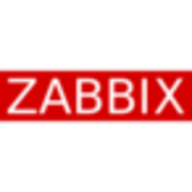


Find out what your peers are saying about Splunk, Wazuh, Microsoft and others in Security Information and Event Management (SIEM).
With SOAR, the workflow takes one minute or less to complete the analysis.
Investing this amount was very much worth it for my organization.
The documentation for Splunk Enterprise Security is outstanding. It is well-organized and easy to access.
I have noticed a return on investment with Splunk Enterprise Security, as it delivers substantial value for money.
Customers see the value in investing in this solution, particularly when it helps resolve issues quickly, turning a potential 20-hour response into one hour.
They assist with advanced issues, such as hardware or other problems, that are not part of standard operations.
Support needs to understand the issue first, then escalate it to the engineering team.
The problem escalates through level one to level three, and then the process starts over with Novo again.
We have paid for Splunk support, and we’re not on the free tier hoping for assistance; we are a significant customer and invest a lot in this service.
If you want to write your own correlation rules, it is very difficult to do, and you need Splunk's support to write new correlation rules for the SIEM tool.
They try to close issues as soon as possible, often just offering documentation links.
It is so straightforward that I have never had to use the support.
For EPS license, if you increase or exceed the EPS license, you cannot receive events.
They struggle a bit with pure virtual environments, but in terms of how much they can handle, it is pretty good.
It is easy to scale.
It's big in a Central European context, and small from a Splunk North American context.
Zabbix is very scalable and lightweight.
Zabbix has high scalability.
I would rate its scalability ten out of ten.
I think QRadar is stable and currently satisfies my needs.
The product has been stable so far.
They test it very thoroughly before release, and our customers have Splunk running for months without issues.
It provides a stable environment but needs to integrate with ITSM platforms to achieve better visibility.
I would rate it a ten out of ten for stability.
Zabbix is very scalable and lightweight.
Zabbix is quite stable, and we haven't had any problems with Zabbix itself.
We receive logs from different types of devices and need a way to correlate them effectively.
If AI-related support can suggest rules and integrate with existing security devices like MD, IPS, this SIM can create more relevant rules.
IBM Security QRadar does not support Canvas, so we had to create custom scripts and workarounds to pull logs from Canvas.
Improving the infrastructure behind Splunk Enterprise Security is vital—enhanced cores, CPUs, and memory should be prioritized to support better processing power.
Splunk Enterprise Security is not something that automatically picks things; you have to set up use cases, update data models, and link the right use cases to the right data models for those detections to happen.
For any future enhancements or features, such as MLTK and SOAR platform integration, we need more visibility, training, and certification for the skilled professionals who are working.
The only issue I can note is that it's Linux-based, and Linux documentation is not the best.
Splunk is more expensive than IBM Security QRadar.
I saw clients spend two million dollars a year just feeding data into the Splunk solution.
The platform requires significant financial investment and resources, making it expensive despite its comprehensive features.
I find it to be affordable, which is why every industry uses it.
It is literally free.
Recently, I faced an incident, a cyber incident, and it was detected in real time.
IBM is seeking information about IBM QRadar because a part of QRadar, especially in the cloud, has been sold to Palo Alto.
We have FortiSOAR and IBM Resilient for IBM Security QRadar orchestration.
This capability is useful for performance monitoring and issue identification.
I assess Splunk Enterprise Security's insider threat detection capabilities for helping to find unknown threats and anomalous user behavior as great.
Splunk Enterprise Security provides the foundation for unified threat detection, investigation, and response, enabling fast identification of critical issues.
If disk usage surpasses a threshold, say 70%, I receive alerts and can take proactive action.
Zabbix has a lot of features, including monitoring, status updates, and collecting information telemetry from storages and servers as well.
Zabbix is Linux-based open-source software, and the main use case is to reduce costs.
| Product | Market Share (%) |
|---|---|
| IBM Security QRadar | 7.4% |
| Wazuh | 11.8% |
| Splunk Enterprise Security | 9.4% |
| Other | 71.4% |
| Product | Market Share (%) |
|---|---|
| Splunk Enterprise Security | 9.4% |
| Wazuh | 11.8% |
| IBM Security QRadar | 7.4% |
| Other | 71.4% |
| Product | Market Share (%) |
|---|---|
| Zabbix | 12.3% |
| LibreNMS | 4.8% |
| SolarWinds NPM | 4.4% |
| Other | 78.5% |



| Company Size | Count |
|---|---|
| Small Business | 88 |
| Midsize Enterprise | 36 |
| Large Enterprise | 101 |
| Company Size | Count |
|---|---|
| Small Business | 104 |
| Midsize Enterprise | 44 |
| Large Enterprise | 225 |
| Company Size | Count |
|---|---|
| Small Business | 53 |
| Midsize Enterprise | 23 |
| Large Enterprise | 34 |
IBM Security QRadar (recently acquired by Palo Alto Networks) is a security and analytics platform designed to defend against threats and scale security operations. This is done through integrated visibility, investigation, detection, and response. QRadar empowers security groups with actionable insights into high-priority threats by providing visibility into enterprise security data. Through centralized visibility, security teams and analysts can determine their security stance, which areas pose a potential threat, and which areas are critical. This will help streamline workflows by eliminating the need to pivot between tools.
IBM Security QRadar is built to address a wide range of security issues and can be easily scaled with minimal customization effort required. As data is ingested, QRadar administers automated, real-time security intelligence to swiftly and precisely discover and prioritize threats. The platform will issue alerts with actionable, rich context into developing threats. Security teams and analysts can then rapidly respond to minimize the attackers' strike. The solution will provide a complete view of activity in both cloud-based and on-premise environments as a large amount of data is ingested throughout the enterprise. Additionally, QRadar’s anomaly detection intelligence enables security teams to identify any user behavior changes that could be indicators of potential threats.
IBM QRadar Log Manager
To better help organizations protect themselves against potential security threats, attacks, and breaches, IBM QRadar Log Manager gathers, analyzes, preserves, and reports on security log events using QRadar Sense Analytics. All operating systems and applications, servers, devices, and applications are converted into searchable and actionable intelligent data. QRadar Log Manager then helps organizations meet compliance reporting and monitoring requirements, which can be further upgraded to QRadar SIEM for a more superior level of threat protection.
Some of QRadar Log Manager’s key features include:
Reviews from Real Users
IBM Security QRadar is a solution of choice among users because it provides a complete solution for security teams by integrating network analysis, log management, user behavior analytics, threat intelligence, and AI-powered investigations into a single solution. Users particularly like having a single window into their network and its ability to be used for larger enterprises.
Simon T., a cyber security services operations manager at an aerospace/defense firm, notes, "The most valuable thing about QRadar is that you have a single window into your network, SIEM, network flows, and risk management of your assets. If you use Splunk, for instance, then you still need a full packet capture solution, whereas the full packet capture solution is integrated within QRadar. Its application ecosystem makes it very powerful in terms of doing analysis."
A management executive at a security firm says, "What we like about QRadar and the models that IBM has, is it can go from a small-to-medium enterprise to a larger organization, and it gives you the same value."
Splunk Enterprise Security is widely used for security operations, including threat detection, incident response, and log monitoring. It centralizes log management, offers security analytics, and ensures compliance, enhancing the overall security posture of organizations.
Companies leverage Splunk Enterprise Security to monitor endpoints, networks, and users, detecting anomalies, brute force attacks, and unauthorized access. They use it for fraud detection, machine learning, and real-time alerts within their SOCs. The platform enhances visibility and correlates data from multiple sources to identify security threats efficiently. Key features include comprehensive dashboards, excellent reporting capabilities, robust log aggregation, and flexible data ingestion. Users appreciate its SIEM capabilities, threat intelligence, risk-based alerting, and correlation searches. Highly scalable and stable, it suits multi-cloud environments, reducing alert volumes and speeding up investigations.
What are the key features?Splunk Enterprise Security is implemented across industries like finance, healthcare, and retail. Financial institutions use it for fraud detection and compliance, while healthcare organizations leverage its capabilities to safeguard patient data. Retailers deploy it to protect customer information and ensure secure transactions.
Zabbix is an open-source monitoring software that provides real-time monitoring and alerting for servers, networks, applications, and services.
It offers a wide range of features including data collection, visualization, and reporting.
With its user-friendly interface and customizable dashboards, Zabbix helps organizations ensure the availability and performance of their IT infrastructure.